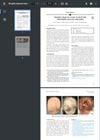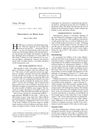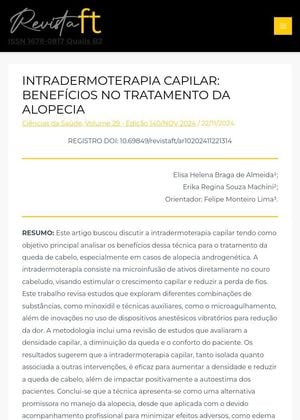TLDR Hair intradermotherapy effectively treats hair loss and boosts self-esteem.
Intradermotherapy is a promising technique for treating androgenetic alopecia by microinfusing active ingredients like minoxidil directly into the scalp, enhancing hair growth and reducing hair loss. It is a less invasive alternative to surgical procedures, with studies showing it effectively increases hair density and boosts self-esteem. The treatment is personalized and typically involves multiple sessions, with professional supervision necessary to minimize side effects such as frontal edema. Despite minor side effects like temporary scalp discomfort, intradermotherapy is considered effective, with ongoing research supporting its potential as a preferred hair loss management approach.

GFC injections significantly improved hair growth and quality with minimal side effects.
 February 2024 in “Cosmoderma”
February 2024 in “Cosmoderma” Low-dose oral minoxidil can help treat male and female pattern hair loss, especially in those who can't use topical treatments or have heart health issues.
 1 citations
,
August 2022 in “JAAD case reports”
1 citations
,
August 2022 in “JAAD case reports” Tofacitinib and oral minoxidil may help treat Sisaipho alopecia areata.
February 2020 in “The Pharmaceutical Society of Japan” 8 citations
,
October 2015 in “PubMed” 5% minoxidil foam effectively treats female hair loss.
 1 citations
,
September 2002 in “PubMed”
1 citations
,
September 2002 in “PubMed” Minoxidil helps stimulate hair growth and reduce hair loss in women with androgenic alopecia.
 370 citations
,
September 1999 in “The New England Journal of Medicine”
370 citations
,
September 1999 in “The New England Journal of Medicine” Finasteride and minoxidil are effective for hair loss, but continued research is needed for better treatments.
36 citations
,
January 1991 in “PubMed” 2% Minoxidil does not prevent hair loss during chemotherapy.





